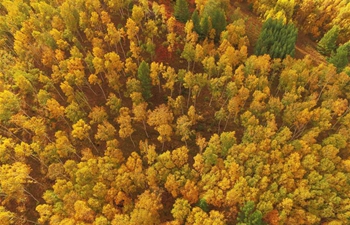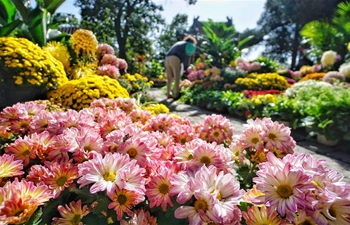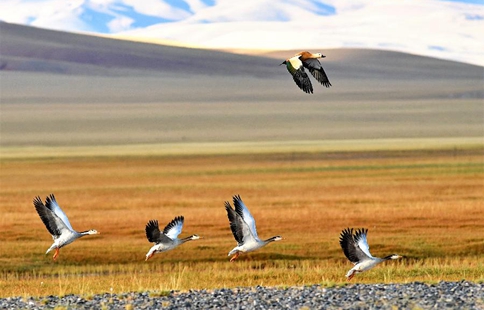NAIROBI, Sept. 22 (Xinhua) -- Kenya's wildlife agency said Friday it has finalized developing the sixth edition of the five-year Kenya Black Rhino Action Plan (2017-2021), which is to be launched later this year.
Kenya Wildlife Service (KWS) Acting Director General, Julius Kimani, said the vision is to conserve at least 2,000 black rhinos of the Eastern African subspecies, while the overall goal for the next five years is to achieve a meta-population of 830 black rhinos by the end of 2021.
"We ask all Kenyans to show their support for rhino conservation by working together on this day and let the world know we care about the plight of rhinos, debunk myths of their horns' value and diminish the demand for rhino horn," said Kimani in a statement issued to mark the World Rhino Day.
The development of the Action Plan follows the worst period in rhino conservation in recent years, with reported rhino poaching of 5,703 black and white rhinos in Africa between 2012 and 2016.
According to Kimani, over the last three years, poaching had dwindled in Kenya largely due to concerted efforts by the government with local and international stakeholders.
The world celebrated all five remaining species of rhinoceros: black, white, greater one-horned, Sumatran and Javan rhinos. There are only 40 Javan rhinos left worldwide, KWS said.
KWS exhorted the world to work together in supporting rhino conservation, and to debunk existing myths about the rhino horn, which will extinguish demand for these horns worldwide.
A meeting was held Friday in northern Kenya to mark the day, bringing together government agencies, NGO's, businesses and cause-related organizations as well as the general public, to celebrate our heritage and share information on rhino conservation.
World Wide Fund for Nature (WWF) CEO Mohamed Awer said at the meeting that they continued to support KWS in Rhino conservation, which had seen the reduction of poaching incidences and increase in rhino numbers.
"We have invested in use of technology in two rhino conservation areas to boost security levels as well as established a sanctuary in Tsavo East that will see increased space for breeding to increase rhino population," Awer said.
According to conservationists, all of the world's rhino species are under threat, predominantly for their horn, which is mostly used in traditional Eastern medicine.
Rhino horn is made up primarily of keratin, the same type of protein that constitutes hair and fingernails. It has no medicinal properties.
Unbridled poaching in the 1970s and 1980s occasioned a substantial deterioration in the rhino population, from upwards of around 20,000 to approximately 300 individuals in 1989.
The surviving rhinos were then corralled into fortified sanctuaries with the aim of enhancing breeding.
KWS said it has been working together with county governments, conservation agencies, private and community sanctuaries to diminish threats posed to Kenya's rhino population.
Kenya currently hosts the third-largest population of rhinos tallying at 1,149 as at the end of 2016, after South Africa and Namibia, according to KWS.

















